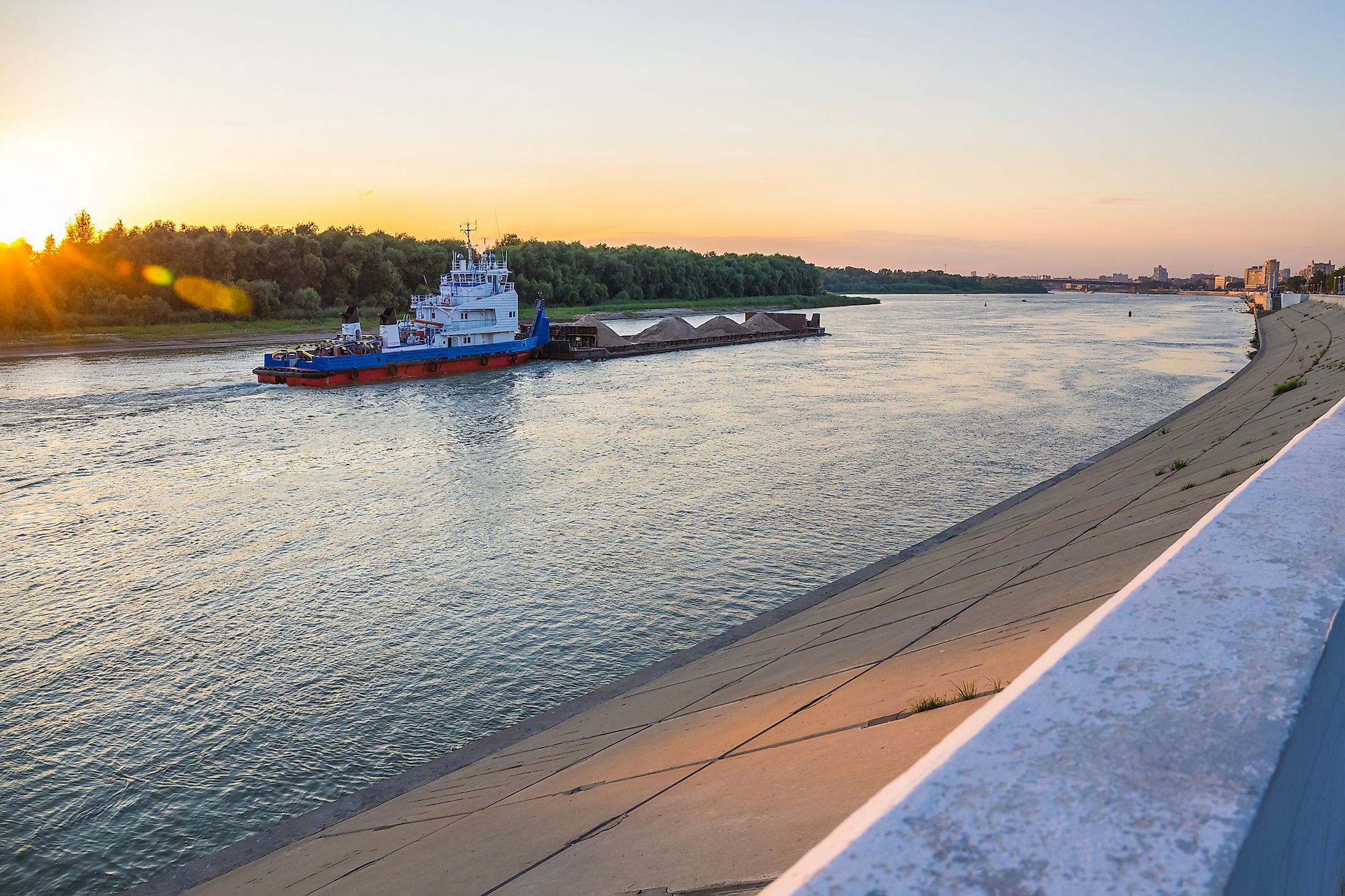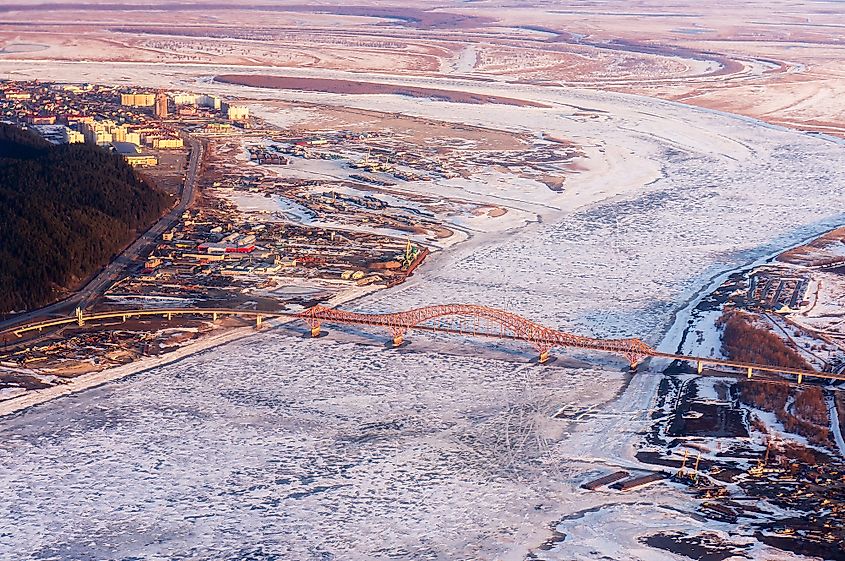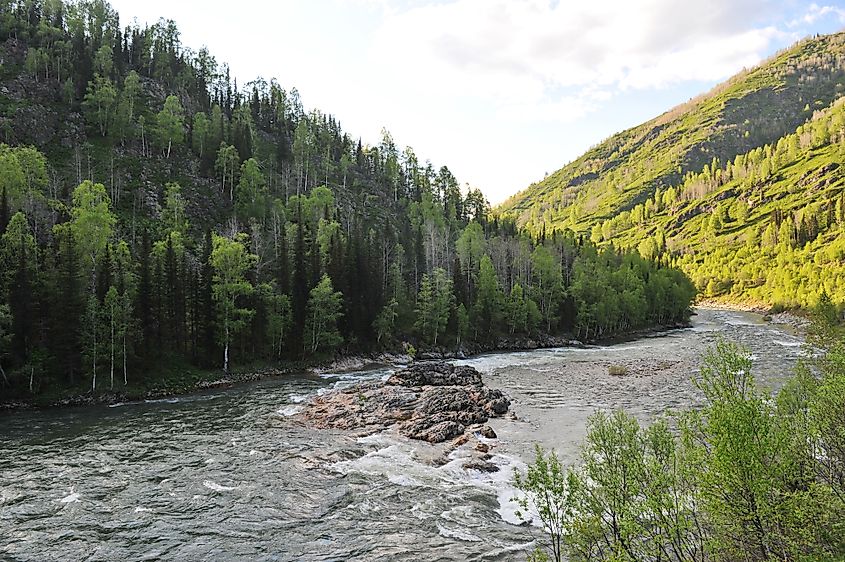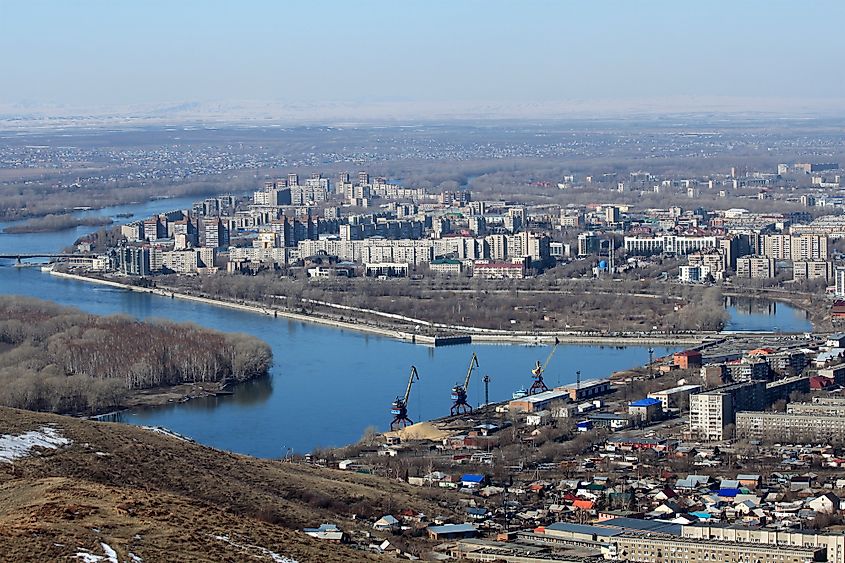
Irtysh River
The Irtysh River, the chief tributary of the Ob River, traces its headwaters to the glaciers of the Altai mountains of the Xinjiang province of China near Mongolia. It then flows northwest into Kazakhstan, and finally joins the Ob near the Khanty-Mansiysk city in western Siberia, Russia, to drain into the Arctic Ocean. The entire course of the river covers a distance of around 4,248 km. Together, the Ob-Irtysh form the 7th longest river system in the world. A number of major cities of China, Kazakhstan, and Russia lie along the banks of this river. The river serves as an important route for the transport of people and goods of the countries through which it flows and also houses a number of high capacity hydroelectric power stations.
Historical Significance
The Irtysh River was the site of ancient civilizations of the Mongol and Turkic peoples. One of the many famous battles fought along this river is the Battle of Irtysh River, which was fought in 657 between the Tang dynasty and the Western Turkic Khaganate. With the battle resulting in the defeat of the latter, it was one of the key events leading to the supremacy of the Tang over the Turks in the region for some time to come. Over the years, different dynasties have fought numerous wars with each other to establish their power in the Irtysh River basin. Currently, however, the river is shared by the 3 countries of China, Kazakhstan and Russia.
Significance Of The River Today

In modern times, the waters of the Irtysh River support the needs of millions living along its banks in China, Kazakhstan, and Russia. In China’s Xinjiang province, the Irtysh is utilized for industrial needs, agricultural purposes, fishing, and water consumption. In Kazakhstan and Russia, the river serves as a significant transport route for maritime war machines, passenger ships and cargo ships during the ice-free season. A large number of hydroelectric power stations have been built along the Irtysh in China, Kazakhstan, and Siberia to meet the electricity needs of the human settlements based near the river.
The River Ecosystem

The Ob-Irtysh River forms a part of the polar freshwater habitat in the countries of Kazakhstan and Russia. A largely continental climate prevails in the region drained by the Irtysh. The vegetation pattern along the banks of the river vary greatly, moving between steppes, coniferous forests, and marshy wetlands. Commercially important fish species like the pikeperch, roach, sturgeon, burbot, and tschirr are found in the waters of the Irtysh. Siberian moles, minks, elks, foxes, and wolves, as well as a large number of avian species, can be found inhabiting the areas along the course of the river as well.
Threats To The Irtysh

Industrial development near the source of the Irtysh River in the Altai Mountains in China’s Xinjiang province, have adversely affected the quality of water in the river. Water pollution due to the release of hazardous chemicals into the river along its course is a major issue threatening the aquatic life of the river. The growing population of China and its industrial needs are also responsible for extracting large amounts of water from the Irtysh. In 2010-2011 alone, 30% of the water stock of the river was consumed by the Chinese population. Such rampant exploitation of river could ultimately lead to serious water shortages downstream in Kazakhstan and Russia. The lack of proper trans-border cooperation among these nations regarding the issue of water shortages and pollution control holds the potential for provoking serious future disputes.











